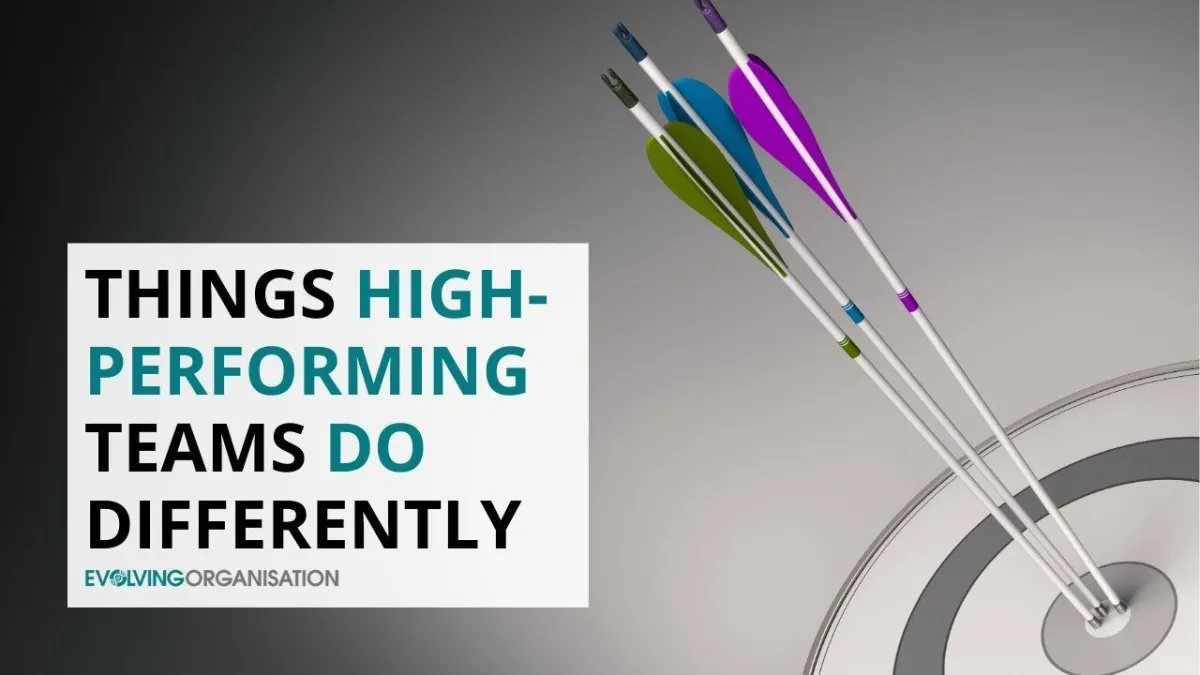
Things High-Performing Teams Do Differently
High-performing teams are distinguished by their ability to communicate effectively, trust each other, and adapt quickly to change. Whether they operate within a hierarchy, a collaborative structure, or as Self-Managing Teams, these teams share key behaviors that set them apart.
They foster clarity, ownership, and continuous learning, which drive exceptional results. This blog explores how different team structures influence what high-performing teams look like, the steps to create them, and the secret to their success.
Steps to Creating High-Performing Teams

Hierarchical Teams:
1. Clearly define roles, responsibilities and reporting lines. For example, assign specific sales targets to each team member.
2. Set measurable goals aligned with organizational objectives.
3. Establish standard routines and processes for work and decision-making.
4. Conduct regular performance reviews to ensure accountability.
5. Develop strong leadership that guides and supports the team.
Collaborative Teams:
1. Clarify shared goals and a common purpose.
2. Foster open communication and trust among members.
3. Use consensus or collaborative decision-making tools.
4. Encourage peer feedback and reflection sessions.
5. Promote experimentation and learning from mistakes.
Self-Managing Teams:
1. Establish a shared purpose that energises everyone.
2. Create clear role definitions that distribute authority and transparent decision-making processes.
3. Build a culture of trust and ownership using specific tools like Role Clarity and each person effectively managing their workload with their Trusted System.
4. Use visual tools like Kanban boards for tracking progress and sharing updates and tensions that arise.
5. Encourage experimentation, failing fast and rapid learning from failures.
Example:
A software development team transitioned from a traditional hierarchy to a self-organising model. They clarified their purpose—delivering innovative solutions—and adopted visual management tools. As a result, they increased their speed, quality, and team engagement.
The Secret to Producing High-Performing Teams

The key to high performance lies in creating clarity and trust within the team. The “Self-Organising Beyond Hierarchy” series emphasizes that teams thrive when roles, responsibilities, and decision-making processes are transparent. This clarity reduces confusion and conflict, enabling teams to focus on delivering value.
Here’s the introductory video from that series.
Core principles include:
Clear roles and expectations: Everyone knows what they are responsible for.
Shared purpose: A compelling vision aligns efforts.
Open communication: Members freely share ideas, feedback, and concerns.
Trust and psychological safety: Members feel safe to take risks and admit mistakes.
Continuous learning: Teams regularly reflect and improve their practices.
Also Read: How to Improve Team Performance.
Example:
A marketing team that adopted a collaborative approach holds weekly retrospectives to discuss what worked and what didn’t. This openness led to better campaigns, higher team morale, and faster innovation cycles.
Final insight:
High-performing teams do not rely solely on talent or effort. They build a culture of clarity, trust, and continuous improvement. Whether structured hierarchically or as self-managing units, these teams focus on shared purpose and open communication. That is the secret to their sustained success.
Suppose you want to learn these practices in depth. In that case, programs like Team Clarity & Faster Decision-Making and The Meetings Revolution offer step-by-step guidance and practical tools to help your team make these shifts confidently and effectively.
When you move beyond hierarchy and empower your team to own their roles, communicate openly, and adapt quickly, you don’t just improve performance—you create the foundation for lasting success in a fast-changing world.
This blog serves as a continuation of our commitment to improving performance and decision-making within organisations. Stay tuned for our next instalment, where we will delve deeper into a range of practical tools that do this.
For more insights and resources, visit our website. Together, let’s evolve and adapt to the challenges of our dynamic world and build a better, more collaborative future—together.


